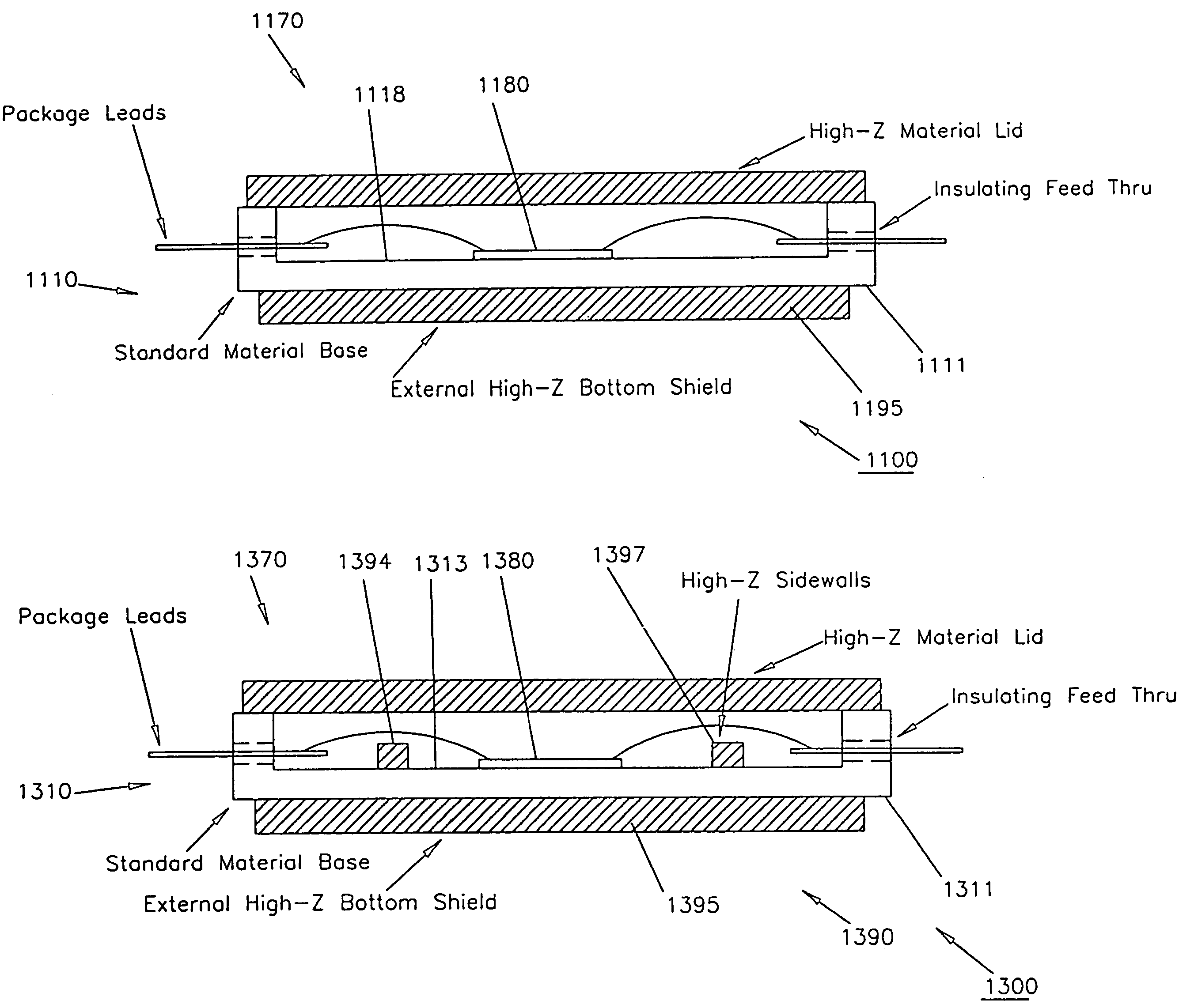Radiation shielding of integrated circuits and multi-chip modules in ceramic and metal packages
a technology of integrated circuits and multi-chip modules, which is applied in the direction of radiation controlled devices, semiconductor devices, semiconductor/solid-state device details, etc., can solve the problems of inability to adequately shield the semiconductor device from the hazards encountered in spacecraft environment, unreliable device operation, and semiconductor device to malfunction in a relatively short tim
- Summary
- Abstract
- Description
- Claims
- Application Information
AI Technical Summary
Benefits of technology
Problems solved by technology
Method used
Image
Examples
example 3
[0139]Tungsten 85% by weight
[0140]Copper 15% by weight
[0141]To fabricate the shield members, sheets of the high and low Z materials can be laminated together in the proper proportions. Alternatively, the shield members may be fabricated by admixing the preferred proportions of powdered high Z and low Z substances together. The high Z and low Z substances are then compressed and stamped. The heat generated by this process leads to heat binding of the radiation shield member components.
[0142]Any high Z material may be used with any low Z material, and one or more, including three or more such materials can be combined. Three or even four different substances, or more, may be combined to satisfy the preferred composition for the shield member.
PUM
 Login to View More
Login to View More Abstract
Description
Claims
Application Information
 Login to View More
Login to View More - R&D
- Intellectual Property
- Life Sciences
- Materials
- Tech Scout
- Unparalleled Data Quality
- Higher Quality Content
- 60% Fewer Hallucinations
Browse by: Latest US Patents, China's latest patents, Technical Efficacy Thesaurus, Application Domain, Technology Topic, Popular Technical Reports.
© 2025 PatSnap. All rights reserved.Legal|Privacy policy|Modern Slavery Act Transparency Statement|Sitemap|About US| Contact US: help@patsnap.com



